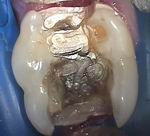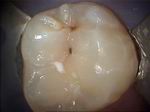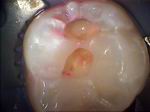



What the heck is MicroDentistry?
Well, it's also called Minimally Invasive Dentistry. Whatever you call it, the strategies of dealing with tooth decay are evolving.
The old model familiar to most Baby-Boomers saw most
teeth getting their first filling when there was already a fairly large
cavity - and getting a large filling as a result. Once placed,
fillings wear out and have to be replaced periodically - with
a slightly bigger filling each time. The result after a few decades was
often a mouthful of teeth weakened by very large fillings, which
eventually may need crowns to hold them together. You fifty-somethings
know what we're talking about.
Rates of tooth decay have been falling steadily, thanks to fluoride,
education, and better prevention. But the philosophy of dealing with
decay, when it happens, is also changing.
Decay can now be discovered much earlier, with cavity-detecting lasers
like the Diagnodent. And dentists are much more likely to notice and
intervene early. If decay is caught in the very early stages,
it can sometimes be reversed by diet and hygiene changes and extra
fluoride.
When a cavity does has to be filled, it's more likely to be treated
while it's still small - leaving a small hole and a small filling that
doesn't weaken the tooth. Technology like air abrasion or lasers can
often do this with no pain and no drill. Teeth that are treated
minimally like this are much more likely to last a lifetime, and the
younger generation will need a lot fewer crown and major reconstruction
than their parents.